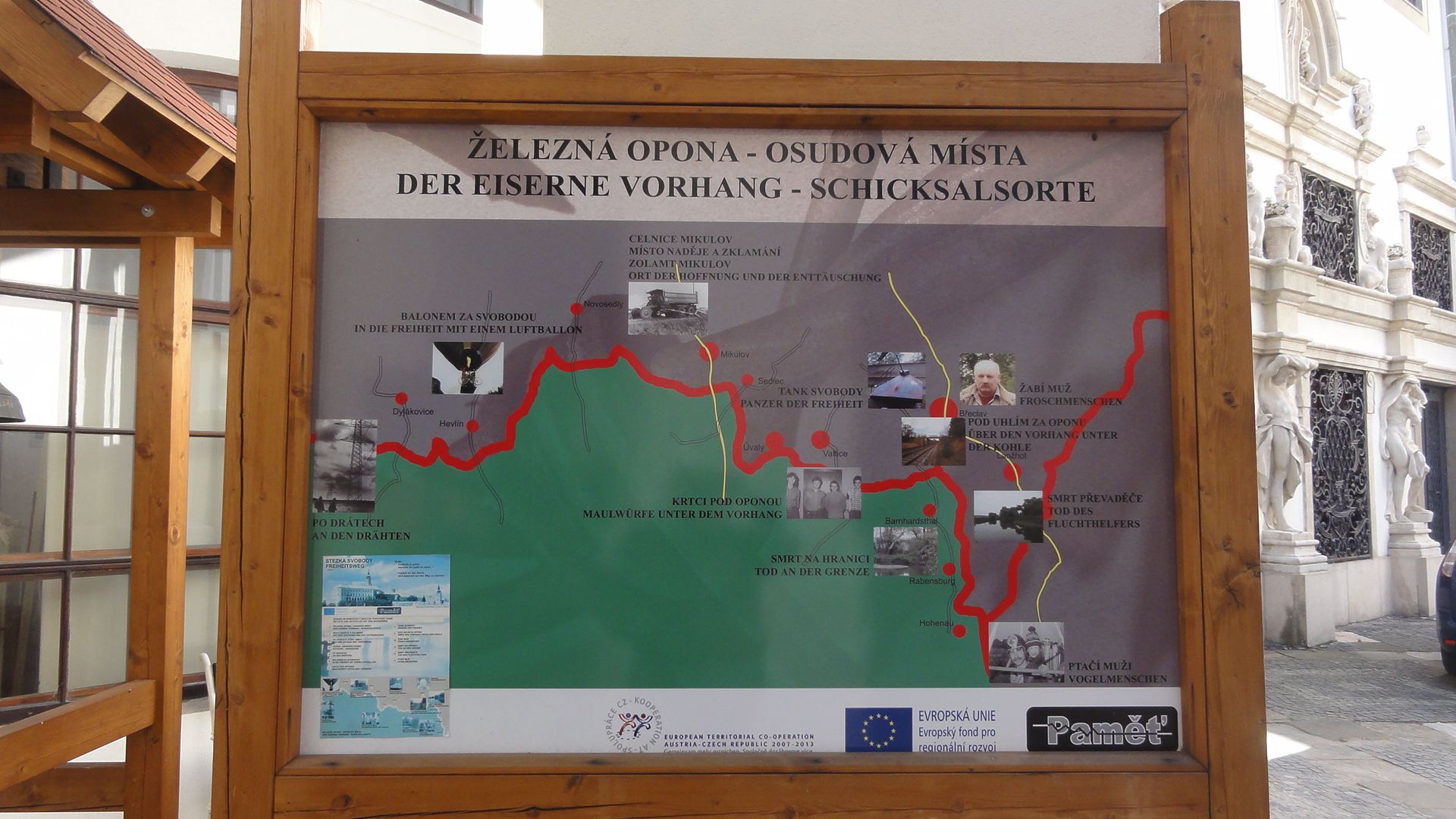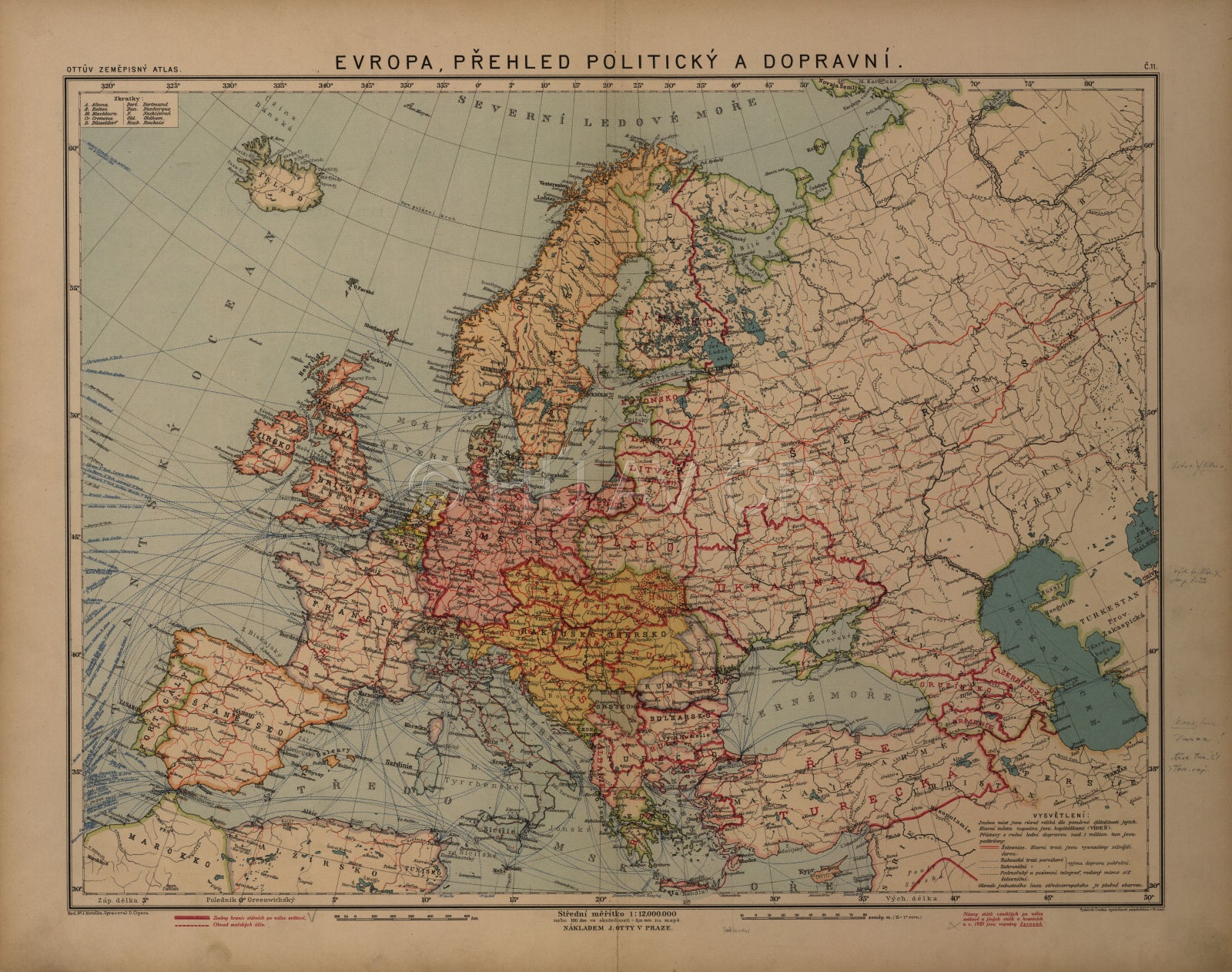Czechoslovakia in international structures
After the end of the First World War, Czechoslovakia, a new sovereign European state, was motivated by the recognition of its territories and defence against a potential or presumed external enemy. Therefore, it gradually became a member of the League of Nations and various warranted alliances, the Little Entente, the Locarno Treaties and the Eastern Pact. Yet none of these international structures prevented aggression of Nazi Germany against Austria and Czechoslovakia at the end of the 1930s or the outbreak of the Second World War.
After the Second World War, Czechoslovakia became a founding state of the United Nations. Soon, new power blocs i.e. the Western Bloc and the Eastern Bloc emerged in the wake of the Soviet Union's growing influence in Central and East-Central Europe. In 1949, the North Atlantic Alliance (NATO) was established and in 1955, the military Warsaw Pact was established to unite the Eastern Bloc countries (already united in the Council for Mutual Economic Assistance since 1949).
References
Veselý, Z.: Smlouvy, pakty, dohody. Slovník mezinárodních a diplomatických aktů. Praha 2006;
Dejmek, J. a kol.: Československo. Dějiny státu. Praha 2018;
Semotanová, E. Zudová-Lešková, Z. ‒ Močičková, J. Cajthaml, J. ‒ Seemann, P. ‒ Bláha J. D. a kol.: Český historický atlas. Kapitoly z dějin 20. století. Praha 2019.

This work is licensed under a Creative Commons BY-NC-ND 4.0
Czechoslovakia in international structures
After the end of the First World War, Czechoslovakia, a new sovereign European state, was motivated by the recognition of its territories and defence against a potential or presumed external enemy. Therefore, it gradually became a member of the League of Nations and various warranted alliances, the Little Entente, the Locarno Treaties and the Eastern Pact. Yet none of these international structures prevented aggression of Nazi Germany against Austria and Czechoslovakia at the end of the 1930s or the outbreak of the Second World War.
After the Second World War, Czechoslovakia became a founding state of the United Nations. Soon, new power blocs i.e. the Western Bloc and the Eastern Bloc emerged in the wake of the Soviet Union's growing influence in Central and East-Central Europe. In 1949, the North Atlantic Alliance (NATO) was established and in 1955, the military Warsaw Pact was established to unite the Eastern Bloc countries (already united in the Council for Mutual Economic Assistance since 1949).
References
Veselý, Z.: Smlouvy, pakty, dohody. Slovník mezinárodních a diplomatických aktů. Praha 2006;
Dejmek, J. a kol.: Československo. Dějiny státu. Praha 2018;
Semotanová, E. Zudová-Lešková, Z. ‒ Močičková, J. Cajthaml, J. ‒ Seemann, P. ‒ Bláha J. D. a kol.: Český historický atlas. Kapitoly z dějin 20. století. Praha 2019.

This work is licensed under a Creative Commons BY-NC-ND 4.0
Czech Republic in international structures
After the fall of totalitarian regimes in Central Europe at the end of 1989 and reunification of Germany in 1990, the power pacts in the European space rearranged or vanished (the Warsaw Pact and the Council for Mutual Economic Assistance). The Czech Republic became a member state of the North Atlantic Alliance (since 1999) and the European Union (since 2004).
References
Veselý, Z.: Smlouvy, pakty, dohody. Slovník mezinárodních a diplomatických aktů. Praha 2006;
Dejmek, J. a kol.: Československo. Dějiny státu. Praha 2018;
Semotanová, E. Zudová-Lešková, Z. ‒ Močičková, J. Cajthaml, J. ‒ Seemann, P. ‒ Bláha J. D. a kol.: Český historický atlas. Kapitoly z dějin 20. století. Praha 2019.

This work is licensed under a Creative Commons BY-NC-ND 4.0
Iron Curtain and the Green Belt
After the Second World War, new power blocs emerged in Europe – the Western and Eastern divided by the Iron Curtain. It made a sharp border between both blocs (barricades, barbed wires, watchtowers, belts of ploughed soil, etc.) and closed the borders from the Eastern Bloc to the Western Bloc for four decades. Many people tried to overcome this obstacle at the cost of their lives. After the fall of the communist regimes, the Iron Curtain lost its importance. Experts refer to this space as the so-called Green Belt where the almost intact landscape is preserved.

Panel in Mikulov, east Moravia, suggestive of the Iron Curtain. Photo Eva Semotanová
References
Bartoš, M. ‒ Kušová, D. ‒ Zemek, F. ‒ Těšitel, J.: Green Belt – nejdelší systém biotopů Evropě, Životní prostředí 40, 2006, č. 5, s. 238–242, dostupné z: http://147.213.211.222/sites/default/files/2006_5_238_242_bartos.pdf [ověřeno 21. 1. 2020];
Jílek, T. ‒ Jílková, A. a kol.: Železná opona: československá státní hranice od Jáchymova po Bratislavu 1948‒1989;
Semotanová, E. Zudová-Lešková, Z. ‒ Močičková, J. Cajthaml, J. ‒ Seemann, P. ‒ Bláha J. D. a kol.: Český historický atlas. Kapitoly z dějin 20. století. Praha 2019.

This work is licensed under a Creative Commons BY-NC-ND 4.0

